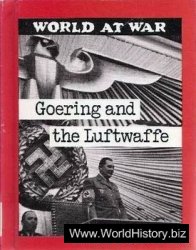The close relationship between church and state can best be seen in the Lutheran states
of Germany and in Scandinavia. Here rulers controlled every appointment to higher
church positions, set clerical salaries, and oversaw all practical matters involving the
church. They saw the church not simply as an institution for sustaining and expressing
faith, but also as an agency of public policy, requiring clergy to publish offi cial decrees
and recruit for the army. Those pastors who refused, or who argued that the church
should play an independent role, were dismissed from their positions or given minor
rural posts where they could have little infl uence and had only a precarious income.
Because the clergy could not be intellectually, fi nancially, or politically independent,
many turned their attention to theological controversies, hurling invectives at those
who disagreed with them on such issues as the exact way in which the Bible was divinely
inspired, and developing a rigid Lutheran orthodoxy. They criticized those who
disagreed with them, or who suggested that certain points of theology might not be
essential to salvation. Sermons became occasions for pastors to show off their knowledge
of obscure theological points rather than provide moral guidance. A seventeenthcentury
Lutheran sermon on Matthew 10: 38, for example (“Even the very hairs of
your head are numbered”), did not focus on the larger meaning of this verse – divine
concern for all aspects of human life down to the smallest detail – but on the origin and
correct care of hair, other biblical references to hair, and the hairstyles proper to good
Lutheran men and women.
Calvinists engaged in intense theological debates as well, expanding Calvin’s already
comprehensive theological system into very detailed statements of faith. In the Netherlands,
theological controversy centered on the exact nature of predestination. The
more conservative faction, called Gomarists, argued that before the beginning of the
world, God had decided who would have faith and who would not, so that an individual’s
going to heaven or hell was a matter of God’s will . The less conservative faction,
called Arminians or Remonstrants, argued that before the beginning of the world,
God had decided to send Christ as the redeemer; God knew, but did not decide, what
each person’s response would be, so that predestination was a matter of God’s knowledge
. In 1618, just as the Thirty Years War was breaking out, the Dutch States General
called for an international conference of Calvinists to decide this matter. This meeting,
called the Synod of Dort, took a very conservative position on the disputed issues and
condemned all those who disagreed. For a decade or so, leaders of the opposition were
exiled or executed, but in 1631 the States General changed its mind about the wisdom of
this, and granted offi cial toleration to a range of Calvinist opinions. This was the fi rst
step in an expanding pattern of toleration that would eventually extend even to non-
Christians, and play a signifi cant role in Dutch prosperity and cultural advance. Once
they had established this general pattern, however, neither the States General nor the
stadholders in the Netherlands intervened in the operation of the church in the ways
Lutheran princes did in Germany.
In England, disputes about the structure and theology of the established state church
were one of the causes of the Civil War in the 1640s. At the beginning of the seventeenth
century, all adults were supposed to be members of the offi cial Church of England, attend
church, and pay their church taxes. All teachers and tutors were licensed by bishops,
who also censored books and could excommunicate those who did not conform.
Bishops had seats in the House of Lords, and many also had other positions in the royal
government. Church services were in English, clergy were allowed to marry, and the
offi cial position on most theological points was clearly Protestant, but many people
thought that there were still too many “popish” holdovers. They supported measures
they thought would “purify” the Anglican Church – for this they were given the name
“Puritans” – and bring it theologically closer to continental Calvinism with its emphasis
on predestination and personal piety.
Puritans wanted clergy who were both learned and godly, and frowned on “frivolous”
pastimes such as dancing or cards, as these wasted time better spent in reading
Scripture or praying. Every waking hour could be improved by greater concentration
on spiritual matters: family devotions should start and end each day, work should be
done in a reverent spirit so that it better pleased God, free moments or hours should
be used in self-examination and exploring one’s conscience. In terms of church structure,
Puritans had widely varying opinions. Some were willing to stick with bishops as
long as incense, elaborate clerical dress, and complex worship services were dropped.
Others wanted to follow the Calvinist model of the Scottish Kirk, with meetings of lay
elders called presbyteries given the most power. Others, who came to be called “independents,”
wanted each congregation relatively independent in terms of doctrine and
structure. A few even wanted no state church at all.
James I did not give in to any Puritan demands and affi rmed the existing church
structure. He instructed a group of scholars to develop a new translation of the Bible
that would be more faithful to the original Greek and Hebrew than the existing English
Bibles, resolve certain disputed points of translation, and support the understanding
of Christian theology and church structure accepted by the Church of England. The
resulting Authorized Version – often called the King James Version – was accepted only
slowly in England, but eventually came to be the standard Bible in most English-speaking
areas, and had a tremendous infl uence on religious and secular English-language
literature.
Puritans responded to James’s support of the Church of England by gradually developing
alternative institutions, as well as continuing to push for reforms. Wealthy individuals,
especially in London, paid unoffi cial “lecturers” to preach and teach, which
James came to see as seditious. They organized what were known as “gathered” churches
in their own homes where individuals prayed and read the Bible, often without a
member of the clergy present. Puritans viewed prayer as an active force that could infl
uence state affairs, so they prayed privately and publicly for certain political changes,
and were fi rmly convinced that prayer aided one’s family, community, and political
allies. As we saw above, Puritans hoped to convert the entire Church of England to
their way of thinking, but when it became clear this was not going to happen, they
turned increasingly inward and concentrated more on personal conversion than on
institutional change. Some Puritans left England for the Netherlands, where they rarely
ran into diffi culties with authorities as their aims and practices blended well with the
Calvinist traditions that were dominant there. About a hundred of these people left the
Netherlands for British North America in 1620, and shortly afterwards other Puritans
emigrated directly from England; at Plymouth and Massachusetts Bay, these groups
established Puritanism as the offi cial state church, and in turn persecuted dissident
groups such as the Quakers.
Puritans who stayed in England increasingly made their opinions known in Parliament
as well as their houses and streets, which led, as we traced in chapter 9 , to war, and
eventually to rule by Oliver Cromwell. Cromwell – along with most of the army – was
basically an independent, but he had no comprehensive plan for a new church structure,
so religious measures were gradual and piecemeal. Bishops were deprived of their
positions, compulsory attendance at church was dropped, and church courts ceased to
function, though the army leaders who actually governed England carried out some of
their functions and enforced social policies many Puritans supported, such as banning
cock-fi ghts, closing disorderly ale-houses, and shutting theaters. Puritan leaders in Parliament
briefl y established a presbyterian form of church and drew up a long statement
of faith called the Westminster Confession that largely agreed with the Synod of Dort
on its main points of theology. Cromwell did not support these moves, however, and
the disorder of the Civil War made enforcing anything diffi cult, so a strictly Calvinist
state church in England was never really established.
The restoration of the monarchy in 1660 also restored the Church of England with
its bishops, and laws were passed against Catholics and anyone who refused to conform
to the state church. Such Nonconformists – often called “dissenters” – were forbidden
to hold private religious meetings and were banned from public offi ce, while Nonconformist
ministers were stripped of their positions and incomes. The Toleration Act of
1689 allowed Nonconformists to have their own ministers and places of worship, but it
still prohibited them, as well as Catholics, from attending universities. Nonconformists
responded by developing their own places of higher education, which in the eighteenth
century became much more vigorous places of intellectual exchange than the allegedly
stuffy and elitist halls of Oxford and Cambridge. Restrictions on Nonconformists
eased slowly throughout the eighteenth century, though those on Catholics remained
longer. Catholics in all of Britain – including Ireland – were prohibited from sending
their sons abroad to be educated, passing their lands to a single heir, or serving in Parliament.
As voting rights were slowly expanded, Catholics were explicitly prohibited
from voting in 1728. Toward the end of the eighteenth century, a series of measures
gradually began to lift these restrictions, though the fi rst of these provoked the Gordon
riots in 1780, when a huge crowd marched on Parliament and destroyed Catholic
churches, chapels, and homes. Complete religious toleration was later adopted in the
United Kingdom, though the Church of England remains the offi cial state church today,
with the reigning monarch as its offi cial head.




 World History
World History









